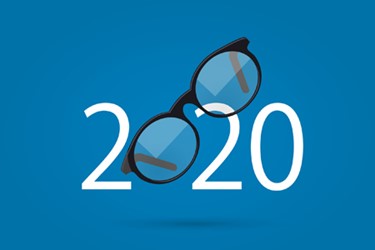2020 Vision For Water: Better Days Ahead

By Kevin Westerling,
@KevinOnWater

The past year was another trying one for the water industry. With the long tail of the Flint lead crisis carrying into 2019 (and 2020, with Lead and Copper Rule revisions still pending), even more contamination headlines were made with the discovery of per- and polyfluoroalkyl substances (PFAS) — dubbed “forever chemicals” — in various hotspots across the nation. It even spawned a big-budget movie at year’s end. But 2020, I trust, will be different.
The aforementioned problems will continue to be a challenge, of course, and those are just two of many. There are longstanding issues around funding, infrastructure renewal, labor shortages, and still more emerging contaminants — for instance, 1,4-dioxane, which may be the next headline-grabber. Amid the chaos, however, there is cause for optimism.
Even as Dark Waters, the PFAS drama starring Mark Ruffalo, was playing in theaters, another movie about the water industry was enjoying a successful premiere in Hollywood. Brave Blue World, a documentary executive-produced by BlueTech Research founder and CEO Paul O’Callaghan — with appearances by Matt Damon and Jaden Smith and narration by Liam Neeson (cooler than Mark Ruffalo, in my book) — “paint[s] an optimistic picture of how humanity is adopting new technologies and innovations to rethink how we manage water,” according to its makers. The Water Environment Federation was on board as a supporting partner, as were water technology companies DuPont Water Solutions, SUEZ, and Xylem. Not only the film itself, but also the water champions that make the vision it portrays possible — those committed to water quality, security, and advocacy — serve as beacons of hope for 2020 and beyond.
 Will Sarni, founder and CEO of Water Foundry (pictured alongside the U.S. EPA’s Sally Gutierrez at the Brave Blue World premiere), recently referred to 2019 as “the year analog water solutions died” while touting the promise of digitalization in a 2020 water-industry outlook article he wrote for GreenBiz.
Will Sarni, founder and CEO of Water Foundry (pictured alongside the U.S. EPA’s Sally Gutierrez at the Brave Blue World premiere), recently referred to 2019 as “the year analog water solutions died” while touting the promise of digitalization in a 2020 water-industry outlook article he wrote for GreenBiz.
“Digital technologies are at the forefront of solving water quantity and quality challenges,” he said. “Solutions such as artificial intelligence and blockchain are helping to vastly improve our understanding of surface and groundwater supplies, how infrastructure is managed, and how communication with customers and consumers on water quantity and quality is managed.”
We at Water Online couldn’t agree more.
In 2019, we teamed with the Smart Water Networks Forum, or SWAN, to issue the Smart Water Report, which provides an overview of smart-water applications and adoption around the world, while also serving as a guide to help water utilities down their own path to digitalization.
Water Innovations’ Top 10 Trends For 2020 naturally features digital technology as well, specifically the role of artificial intelligence as water events are played out in simulations. Less techy, but nonetheless innovative are articles about sidestream treatment, resiliency, and microalgae.
Innovative thinking — i.e., the water champions propelling us forward — is also identified as top trends with articles on progressive design-build and corporate social responsibility. And that’s just a sampling of the optimism you can find.
While water professionals may have borne the brunt of bad news lately, the industry finds itself in the unique position of making a profound and beneficial impact on humankind going forward by safeguarding our most precious resource. As the stories referenced here attest, we are well on our way.
Or, as optimists say, the glass is half-full.
